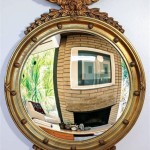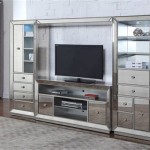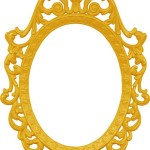How To Make A Homemade Mirror
Creating a mirror at home involves transforming a clear piece of glass into a reflective surface using a chemical process. While not as durable as commercially manufactured mirrors, homemade versions can serve various decorative or experimental purposes. This article will guide readers through the process of creating a simple silver mirror using readily available materials.
Preparing the Glass Surface
The initial step involves meticulous cleaning of the glass surface. Any grease, dust, or fingerprints can interfere with the even application of the silvering solution, leading to imperfections in the final mirror. Wash the glass thoroughly with soap and water. Rinse it completely to remove any soap residue. For optimal results, follow the soap cleaning with a wipe-down using isopropyl alcohol, which further removes any remaining contaminants and promotes even wetting by the silvering solution.
After cleaning, the glass should be handled carefully by the edges to avoid reintroducing contaminants. A clean, lint-free cloth can be used to dry the glass, or it can be allowed to air dry in a dust-free environment. Protecting the prepared glass from dust and other airborne particles until the silvering process begins is crucial.
Mixing the Silvering Solution
The silvering solution is the heart of the mirroring process, containing the chemicals that deposit a thin layer of silver onto the glass. This process requires two separate solutions that are mixed immediately before application. Safety precautions, including wearing gloves and eye protection, are essential due to the chemical nature of these solutions.
Solution A:
Dissolve 5 grams of silver nitrate in 100 ml of distilled water in a clean container. Distilled water is crucial as impurities in tap water can negatively affect the reaction.Solution B:
Dissolve 2.5 grams of sodium hydroxide in 100 ml of distilled water in a separate clean container. Similar to Solution A, ensure all containers and tools used are thoroughly cleaned.Solution C (Reducer):
In a third container, mix 25 ml of concentrated ammonium hydroxide solution with 50 ml of distilled water and then add 5 grams of dextrose. This solution provides the reducing agent necessary for the silver to precipitate onto the glass.It is important to note that ammonium hydroxide has a pungent odor. This process should be conducted in a well-ventilated area.
Applying the Silvering Solution
Once the glass is prepared and the solutions are mixed, the silvering process can begin. This stage requires careful timing and a steady hand to ensure an even coating. Pour Solution A into a clean, shallow container large enough to accommodate the glass piece. Slowly add Solution B to Solution A while stirring continuously. A brownish precipitate will form; continue stirring until the precipitate partially dissolves.
Next, slowly add Solution C (the reducer) to the mixture of Solutions A and B, stirring constantly. The solution should begin to clear, and a thin layer of silver will start to deposit on the inside walls of the container. This indicates that the silvering solution is active.
Carefully place the clean glass into the container, ensuring it is completely submerged in the solution. Allow the glass to sit undisturbed in the solution for approximately 15-20 minutes. During this time, the silver will deposit onto the glass surface, forming the reflective layer.
Finishing the Mirror
After the designated time, carefully remove the silvered glass from the solution. Rinse it gently with distilled water to remove any residual chemicals. Allow the mirror to air dry completely in a dust-free environment.
Once the mirror is dry, a protective coating can be applied to prevent oxidation and increase the durability of the silver layer. A layer of shellac or clear acrylic spray paint can be applied to the back of the silvered surface. This protective layer seals the silver from the environment, preserving the reflective surface.
Handle the finished mirror carefully. While it will function as a mirror, the silver layer is delicate compared to commercially produced mirrors. Avoid abrasive cleaners or harsh chemicals that could damage the reflective surface.

Homemade Mirror Paper How To Make At Home Diy Epaper Sajal S Art

How To Make A Mirror With Pictures Wikihow

How To Make A Mirror With Pictures Wikihow

Homemade Mirror How To Make At Home Without Paper Syedz Diy

How To Make A Mirror With Pictures Wikihow

How To Make A Mirror With Pictures Wikihow

20 Fantastic Diy Mirror Frame Ideas A Cultivated Nest

Homemade Mirror Paper How To Make At Home Diy Epaper Sajal S Art

30 Amazing Diy Decorative Mirrors Mirror Decor

How To Make A Seas Mirror








